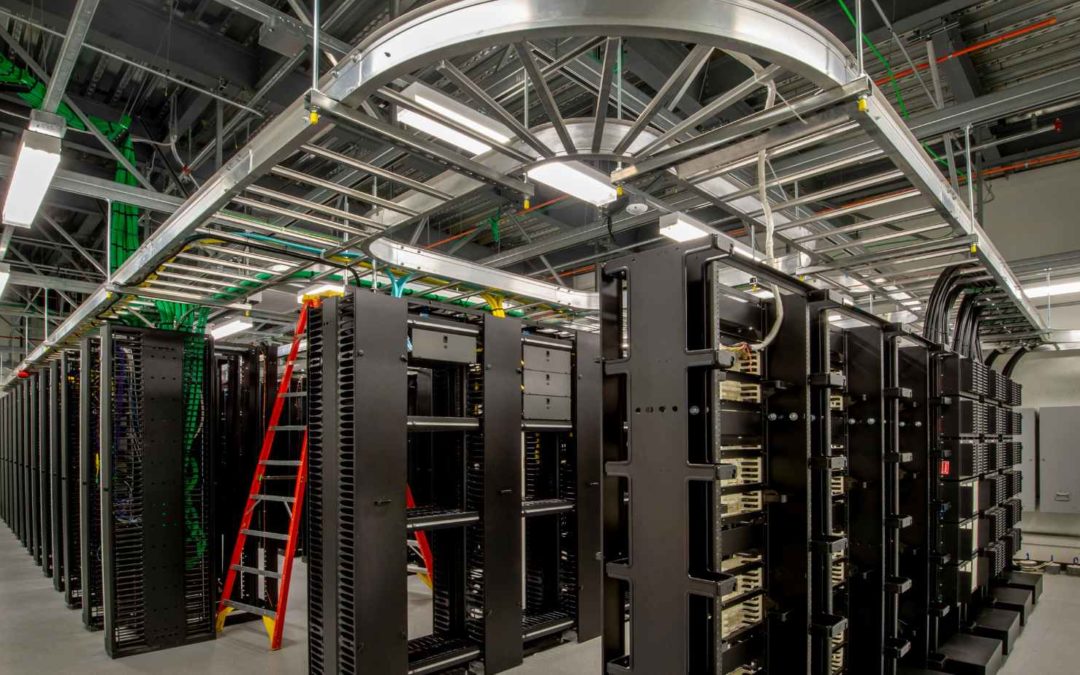Are you tired of constantly worrying about the temperature, humidity, and power consumption levels in your data center?
Imagine a revolutionary solution that can completely transform the way you monitor these critical environmental factors. Welcome to ‘Revolutionize Data Center Environmental Monitoring: A Game Changer’.
This comprehensive guide is designed to empower you with the knowledge and tools needed to revolutionize your data center monitoring practices. From the benefits of real-time data analysis to the importance of automated alerts, we will explore every aspect of creating an effective monitoring system.
Discover how this game-changing approach can enhance efficiency, reduce risks, and ensure the optimal performance of your data center.
Join us on this journey to freedom from the limitations of traditional monitoring methods.
Table of Contents
Key Takeaways
- Data center environmental monitoring enhances efficiency and reliability of operations.
- Real-time data analysis allows for proactive measures and optimized efficiency.
- Automated alerts enable immediate action, reduced response time, and enhanced decision-making.
- Future trends in data center monitoring include AI and ML for predictive analysis, IoT devices for real-time monitoring, advanced data visualization techniques, and remote monitoring for enhanced flexibility and freedom.
Benefits of Data Center Environmental Monitoring
By implementing data center environmental monitoring, you can significantly enhance the efficiency and reliability of your operations. Monitoring the environmental conditions within your data center allows you to proactively identify and address potential issues before they escalate into costly problems.
With real-time monitoring of temperature, humidity, and airflow, you can ensure optimal conditions for your critical equipment, preventing overheating and reducing the risk of hardware failure.
Additionally, monitoring power consumption and energy usage enables you to identify opportunities for energy optimization, leading to cost savings and a reduced environmental footprint.
By monitoring air quality, you can prevent the buildup of dust and contaminants that can negatively impact the performance and lifespan of your equipment.
Key Components of an Effective Monitoring System
To revolutionize data center environmental monitoring, you need to understand the key components of an effective monitoring system that will optimize your operations and prevent potential issues. A comprehensive monitoring system should consist of the following components:
| Component | Description |
|---|---|
| Sensors | These devices measure various environmental parameters such as temperature, humidity, air pressure, and airflow. They provide real-time data to ensure optimal conditions within the data center. |
| Monitoring Software | This software collects and analyzes data from the sensors, providing detailed insights into the environmental conditions. It can also generate alerts and notifications when predefined thresholds are breached. |
| Connectivity | A reliable network infrastructure is essential for transmitting data from the sensors to the monitoring software. Wired connections and wireless technologies such as Wi-Fi or Bluetooth can be utilized. |
| Data Storage | The monitoring system should have sufficient storage capacity to store historical data for analysis and future reference. This allows for trend analysis and helps in identifying potential issues or patterns. |
Importance of Real-time Data Analysis
For optimal data center operations, you need to prioritize the analysis of real-time data through the use of a comprehensive monitoring system. Real-time data analysis plays a crucial role in ensuring the smooth functioning of your data center.
By continuously monitoring key metrics such as temperature, humidity, power consumption, and network traffic in real-time, you can identify and address potential issues before they escalate into major problems. With real-time data analysis, you gain valuable insights into the performance of your data center infrastructure, allowing you to make informed decisions and take proactive measures to optimize efficiency and minimize downtime.
Enhancing Efficiency With Automated Alerts
Ensure optimal efficiency in your data center operations by implementing automated alerts. With automated alerts, you can proactively monitor and manage your data center environment, saving time and resources. Here are four key benefits of using automated alerts in your data center:
- Real-time notifications: Receive instant alerts when critical events occur, allowing you to take immediate action and prevent potential downtime or equipment failures.
- Reduced response time: Automated alerts enable you to respond quickly to issues, minimizing the impact on your operations and reducing the risk of data loss.
- Improved resource allocation: By receiving alerts on resource utilization and capacity thresholds, you can optimize resource allocation and avoid overloading or underutilization of equipment.
- Enhanced decision-making: Automated alerts provide you with valuable insights into your data center performance, enabling informed decision-making and the ability to address potential issues before they become major problems.
Implementing automated alerts in your data center operations empowers you to efficiently manage your environment, ensuring uninterrupted productivity and freedom from unnecessary downtime or disruptions.
Future Trends in Data Center Monitoring
Maximizing Efficiency with Proactive Monitoring
To ensure that your data center remains at the forefront of technological advancements, it’s crucial to stay informed about future trends in data center monitoring.
One of the emerging trends is the utilization of artificial intelligence (AI) and machine learning (ML) algorithms for predictive analysis. By analyzing historical data and identifying patterns, AI and ML can help predict potential issues or failures before they occur, allowing you to take proactive measures to prevent downtime and optimize performance.
Another trend to watch out for is the adoption of Internet of Things (IoT) devices for real-time monitoring. These devices can collect and transmit data from various parts of the data center, providing insights into temperature, humidity, power consumption, and other vital parameters. With IoT, you can monitor and manage your data center remotely, enhancing flexibility and freedom.
Additionally, advanced data visualization techniques, such as dashboards and heat maps, are gaining popularity. These visual representations offer a holistic view of your data center’s performance and enable you to identify inefficiencies and bottlenecks easily.
Frequently Asked Questions
What Are the Potential Risks of Not Implementing a Data Center Environmental Monitoring System?
Not implementing a data center environmental monitoring system poses potential risks including overheating, equipment failure, and power outages. Without proper monitoring, you could lose valuable data, experience costly downtime, and compromise the overall performance and reliability of your data center.
How Can a Data Center Environmental Monitoring System Help in Identifying and Preventing Potential Equipment Failures?
A data center environmental monitoring system can help you identify and prevent potential equipment failures by continuously monitoring temperature, humidity, and other critical parameters, allowing you to take proactive measures before any damage occurs.
Can a Data Center Environmental Monitoring System Help in Reducing Energy Consumption and Costs?
A data center environmental monitoring system can help you reduce energy consumption and costs by providing real-time data on temperature, humidity, and airflow. With this information, you can optimize cooling systems and identify areas for improvement.
What Are Some Common Challenges Faced When Implementing a Data Center Environmental Monitoring System?
When implementing a data center environmental monitoring system, common challenges you may face include compatibility issues with existing infrastructure, ensuring accurate and real-time data collection, and managing the complexity of integrating multiple monitoring devices.
Are There Any Regulatory Compliance Requirements That a Data Center Environmental Monitoring System Can Help Meet?
A data center environmental monitoring system can help meet regulatory compliance requirements by providing real-time monitoring of temperature, humidity, and air quality. It ensures that your data center operates within the specified parameters, preventing any violations and potential penalties.
Conclusion
In conclusion, the revolutionization of data center environmental monitoring has become a game changer in enhancing efficiency and optimizing operations.
By employing an effective monitoring system, real-time data analysis, and automated alerts, data centers can now accurately monitor and control their environmental conditions.
This technical advancement not only ensures the smooth running of data centers but also paves the way for future trends in monitoring, offering unprecedented levels of control and optimization.

